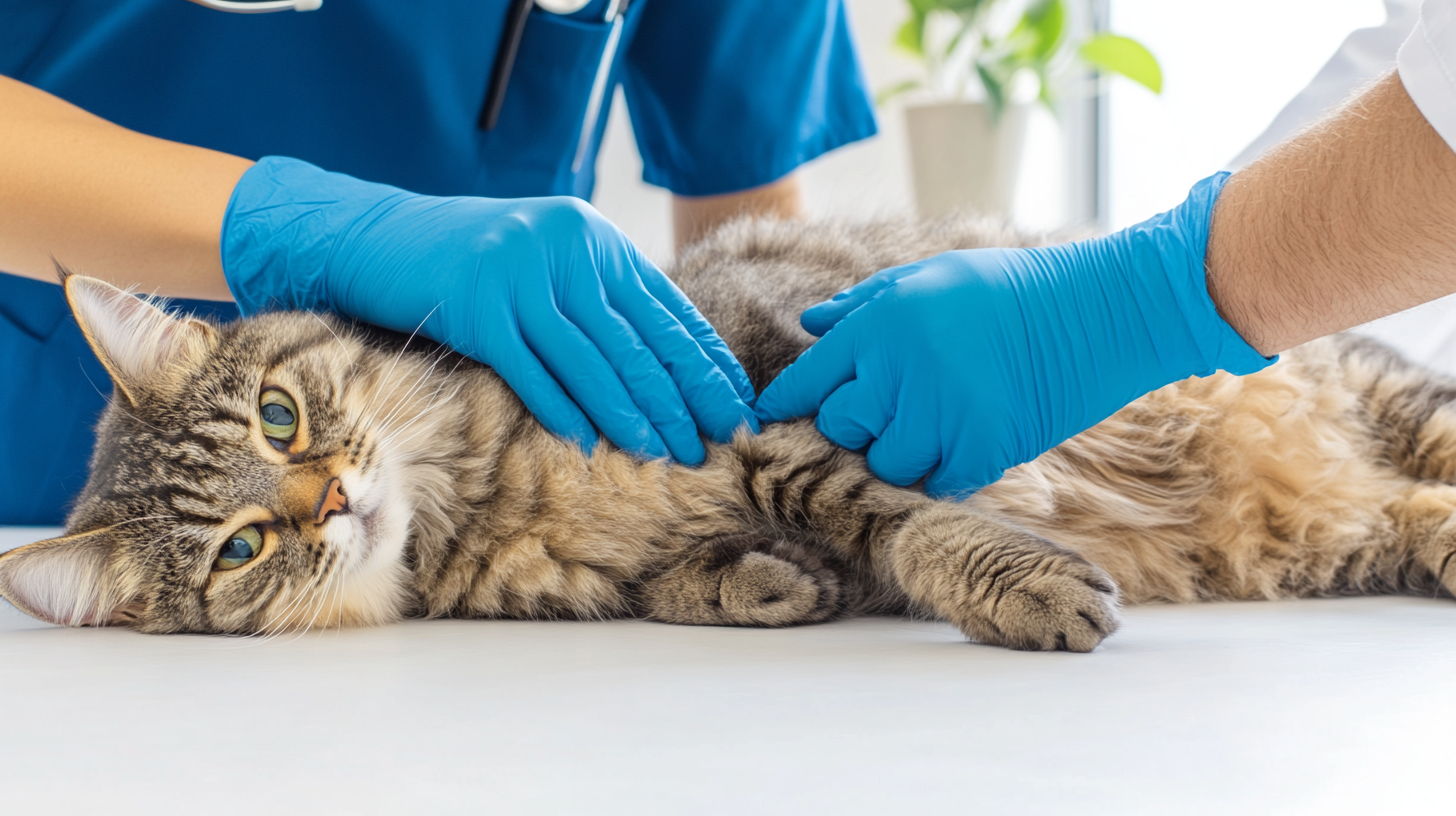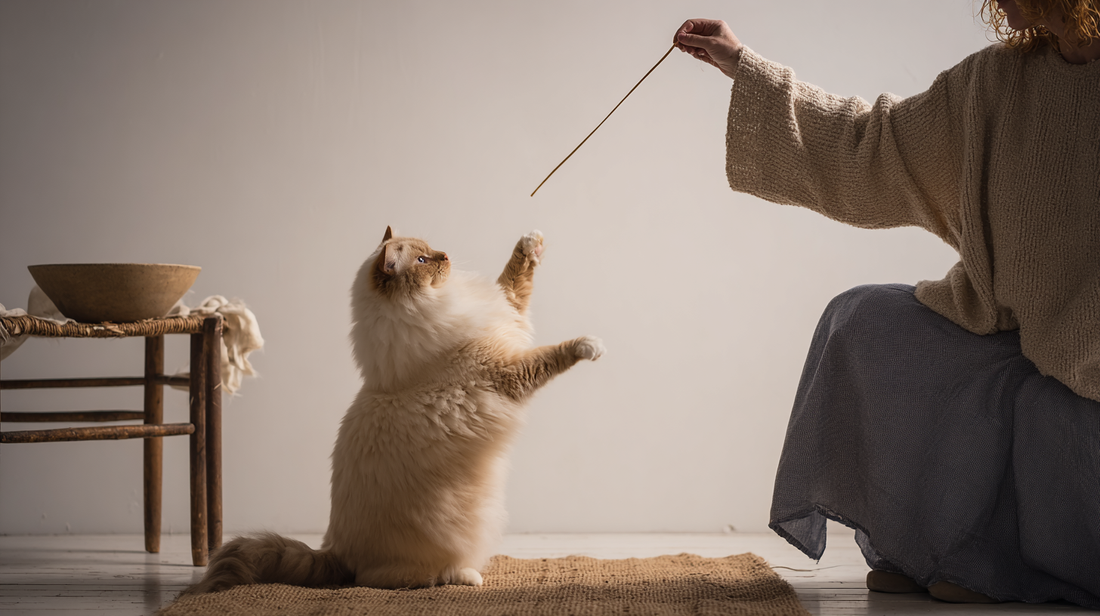Urinary stones represent one of the most painful and potentially dangerous health conditions your cat may face during their lifetime. These mineral formations silently develop in your cat's urinary tract, causing intense discomfort and requiring prompt medical attention.
While various treatment methods are available, including advanced endoscopic and lithotripsy technologies, a proactive approach focused on prevention is paramount for ensuring your cat's long-term health, comfort, and well-being. Understanding the causes, recognizing the signs, and being aware of both traditional and contemporary management strategies will empower you to provide the best possible care for your beloved feline friend.
This guide aims to equip you with accessible, practical, and accurate information grounded in veterinary consensus to navigate the complexities of feline urinary stones.
Summary
Understanding feline urinary stones
Urinary stones, or uroliths , are solid, crystalline mineral aggregations that form in the urinary tract of cats. These formations vary significantly in size, shape, and mineral composition. To better understand this condition, it's helpful to know the different locations where these stones can occur: the lower urinary tract, encompassing the bladder and urethra, and the upper urinary tract, which includes the kidneys and ureters.
In the lower urinary tract, stones in the bladder are termed urocystoliths or cystoliths, while those in the urethra are called urethroliths. The upper urinary tract can be affected by nephroliths (kidney stones) and ureteroliths (stones in the ureters).
Among the various types of uroliths observed in cats, struvite and calcium oxalate are the most frequently encountered. Other less common types include urate and cystine stones. Importantly, the specific mineral composition of the urolith is a critical factor that dictates the most effective treatment and prevention protocols. For instance, struvite uroliths are often moderately radiopaque, meaning they can be visualized on X-rays.
Recognizing the warning signs in your cat
Early detection of urinary stones is crucial for minimizing your cat's discomfort and preventing severe complications, such as urinary obstruction. As an observant pet owner, you play a vital role in recognizing subtle changes in your cat's urinary habits and behavior.
Common clinical signs that may indicate the presence of urinary stones include:
Frequent urination (pollakiuria), often with only small amounts of urine being passed
Straining to urinate (stranguria), which may involve prolonged attempts in the litter box without successful urination
Painful urination (dysuria) might be evidenced by vocalization or discomfort while urinating
Blood in the urine (hematuria) is another common sign that should not be ignored
Lethargy or a decreased appetite
Urinating outside their litter box, a significant behavioral change that warrants investigation
It is absolutely critical to recognize that urinary obstruction is a medical emergency! If your cat is unable to pass any urine, seek immediate veterinary attention as this condition can rapidly lead to kidney damage and even death.

Treatment options for urinary stones
Medical dissolution therapy
For certain types of stones, particularly struvite uroliths, medical dissolution is often the preferred initial treatment. This involves feeding your cat a special therapeutic diet formulated to create urine that is undersaturated with struvite components, allowing the stone to gradually dissolve. In some cases, medications may also be used to aid in the dissolution process.
However, medical dissolution may not be suitable if medications or the specialized diet cannot be administered or are contraindicated, if the stones cannot be adequately bathed in the modified urine (e.g., due to a urinary obstruction or a very large stone), or if there is an uncontrollable urinary tract infection.
Minimally invasive removal techniques
In an era of advancing veterinary medicine, minimally invasive procedures have become increasingly common for removing urinary stones, offering advantages over traditional surgery such as shorter hospitalization and recovery times for your cat.
For small urocystoliths that are likely to pass through the urethra, options like voiding urohydropropulsion (flushing small stones out with fluid) or basket retrieval using specialized endoscopic instruments can be employed.
For larger stones in the bladder or urethra, intracorporeal lithotripsy, which uses lasers or other energy sources to break down the stones into smaller fragments that can then be passed or removed, is a highly effective option; in fact, laser lithotripsy has been reported to be 100% effective in the removal of urethroliths.
Percutaneous cystolithotomy, a minimally invasive surgical technique, can also be used to remove bladder stones. For obstructions in the upper urinary tract caused by ureteroliths, ureteral stenting (placing a small tube within the ureter to allow urine flow) or subcutaneous ureteral bypass (SUB) surgery may be necessary to relieve the obstruction and preserve kidney function.
Surgical intervention when necessary
While surgical removal (cystotomy or urethrotomy) may still be required in certain complex cases, particularly when minimally invasive options are not feasible or successful, there is a growing emphasis on utilizing less invasive approaches whenever possible. It's important to note that urethral surgery is generally associated with higher complication rates.
The choice of procedure will depend on factors such as the urolith type, the expertise and equipment available, the number and size of stones, and your cat's overall condition.
Prevention strategies for long-term care
Targeted dietary management
Dietary management plays a pivotal role in preventing urolithiasis :
For cats with sterile struvite uroliths, which are more common in cats, feeding therapeutic maintenance foods that are low in magnesium and phosphorus and that acidify the urine is often recommended
In cases of infection-induced struvite uroliths, the primary focus is on persistent elimination of the urinary tract infection (UTI)
For cats prone to forming calcium oxalate stones, it's important to avoid urine-acidifying diets and diets with excessive protein content
To minimize the recurrence of urate uroliths, dietary strategies include decreasing urine concentration through increased water intake, promoting alkaline urine (pH ≥ 7), and limiting purine intake
Preventing cystine urolith recurrence involves decreasing urine concentration, limiting animal protein and sodium intake, increasing urine pH, and neutering

Hydration techniques for urinary health
Increasing water intake to dilute the urine is paramount for all types of stones, but especially for calcium oxalate stones. This can be achieved by:
Feeding high-moisture foods (canned food)
Adding water to dry kibble
Considering the use of viscous water, which has been shown in studies to increase water intake in cats by 25% and 21% higher at 28 and 56 days, respectively
Offering fresh water in multiple clean bowls placed in easily accessible locations
Using different types of water bowls, such as ceramic or stainless steel, as some cats have preferences
Using complementary food additives that enhance water palatability
Studies have indicated that foods containing high quantities of water (i.e., >75% moisture) can significantly decrease the urinary relative supersaturation for calcium oxalate.
Ongoing veterinary monitoring
Regular veterinary check-ups are vital for early detection of any urinary issues and monitoring the effectiveness of preventive strategies. Routine urine testing can help identify factors that may contribute to stone formation. If your cat has underlying conditions like hypercalciuria, these should be managed under veterinary guidance.
Finally, be aware that some breeds have a higher predisposition to certain types of urinary stones.

Conclusion: Protecting your cat's urinary health
Feline urolithiasis is a significant health concern for cats, but with your diligent attention to prevention and prompt, appropriate treatment, it can be effectively managed. Remember to know the signs of urinary stones and seek veterinary care immediately if you suspect a problem.
Understand that there are various treatment options available, ranging from medical dissolution to minimally invasive procedures. Most importantly, prioritize prevention through tailored dietary management and ensuring your cat stays well-hydrated.
For personalized advice on the best strategies for your cat's individual needs, it is crucial to consult your veterinarian. They can help identify any specific risk factors and recommend the most appropriate diet, hydration plan, and monitoring schedule to ensure your feline companion enjoys a healthy and comfortable life.
The information in this article is based on the following scientific publications:
Buckley, C.M.F., Hawthorne, A., Colyer, A. & Stevenson, A.E. (2011). Effect of dietary water intake on urinary output, specific gravity and relative supersaturation for calcium oxalate and struvite in the cat. British Journal of Nutrition, 106(S1), pp. S128–S130.
Hall, J.A., Vanchina, M.A., Ogleby, B. & Jewell, D.E. (2021). Increased Water Viscosity Enhances Water Intake and Reduces Risk of Calcium Oxalate Stone Formation in Cats. Animals, 11(7), p. 2110.
Hsu, H., Ueno, S., Miyakawa, H., Ogawa, M., Miyagawa, Y. & Takemura, N. (2022). Upper urolithiasis in cats with chronic kidney disease: prevalence and investigation of serum and urinary calcium concentrations. Journal of Feline Medicine and Surgery, 24(6), pp. E70–e75.
Lulich, J.P., Berent, A.C., Adams, L.G., Westropp, J.L., Bartges, J.W. & Osborne, C.A. (2016). ACVIM Small Animal Consensus Recommendations on the Treatment and Prevention of Uroliths in Dogs and Cats. Journal of Veterinary Internal Medicine, 30(5), pp. 1564–1574.
Looking for a solution? Start here
Stylla Hydration for cats
Supports optimal hydration with amino acid-based formulation
- Encourages drinking with amino acid flavour enhancers
- Supports urinary health through increased water intake
- Promotes kidney function with specialised ingredients
Made in Switzerland with strict quality standards





